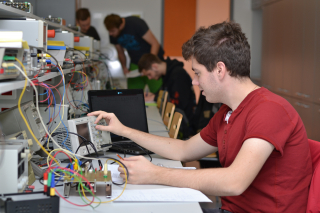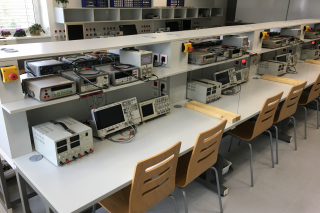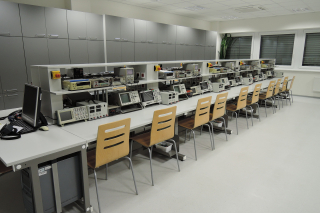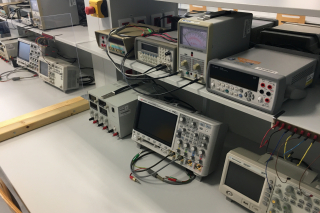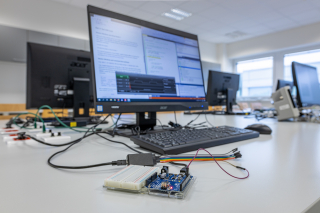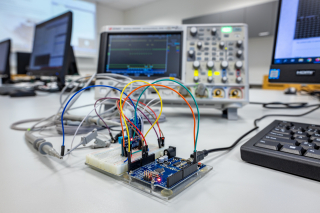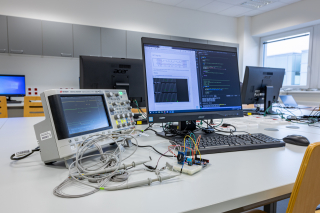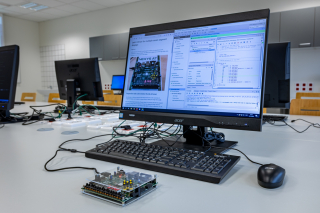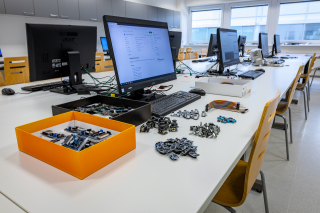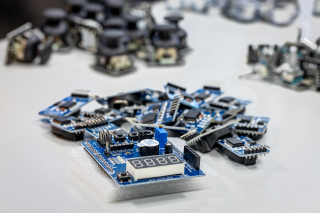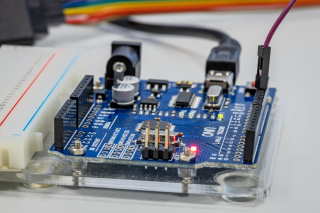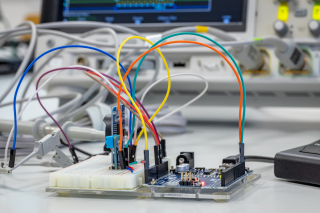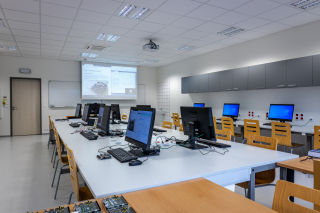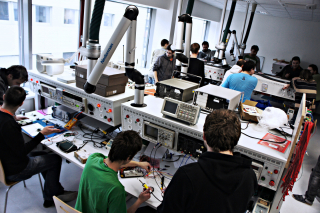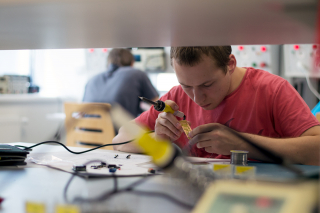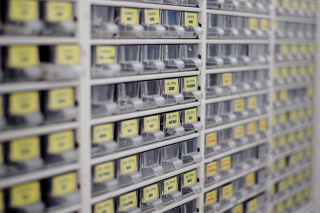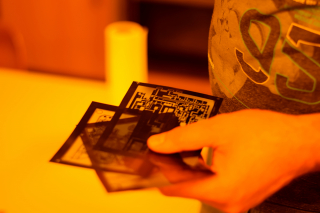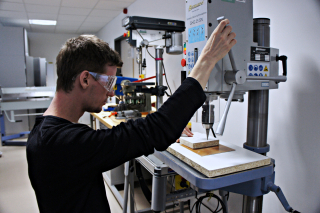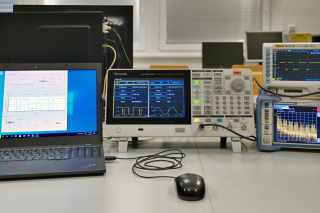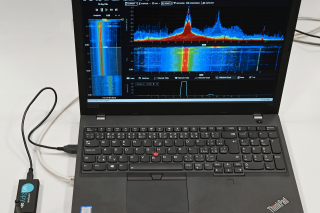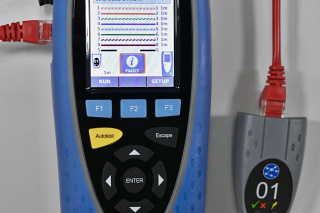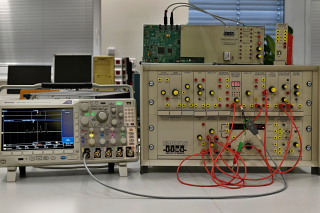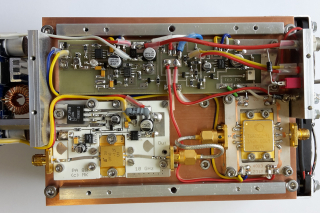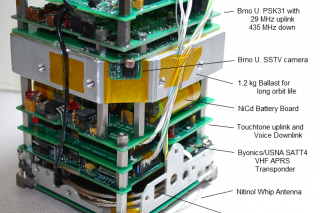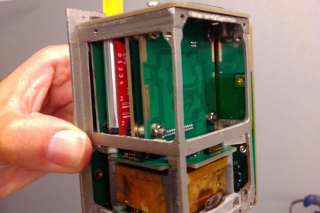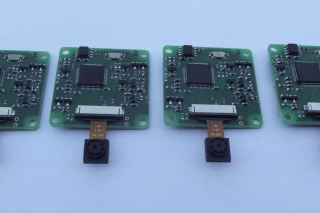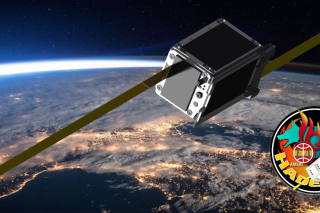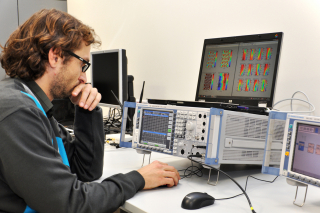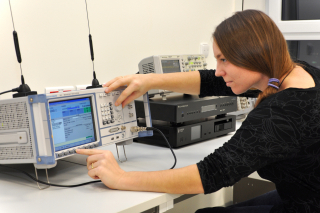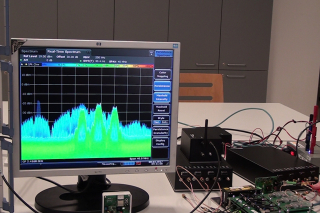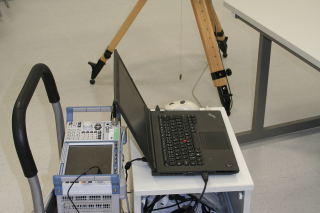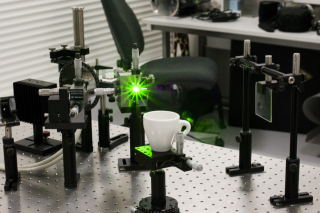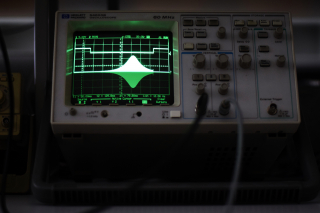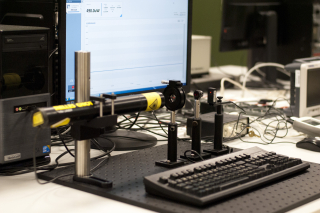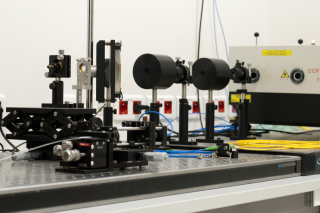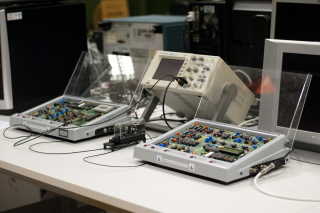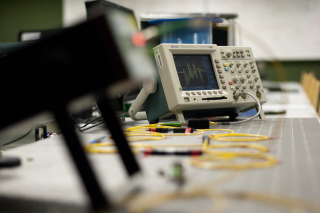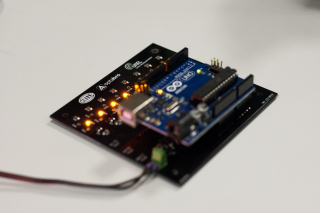Lecture laboratories
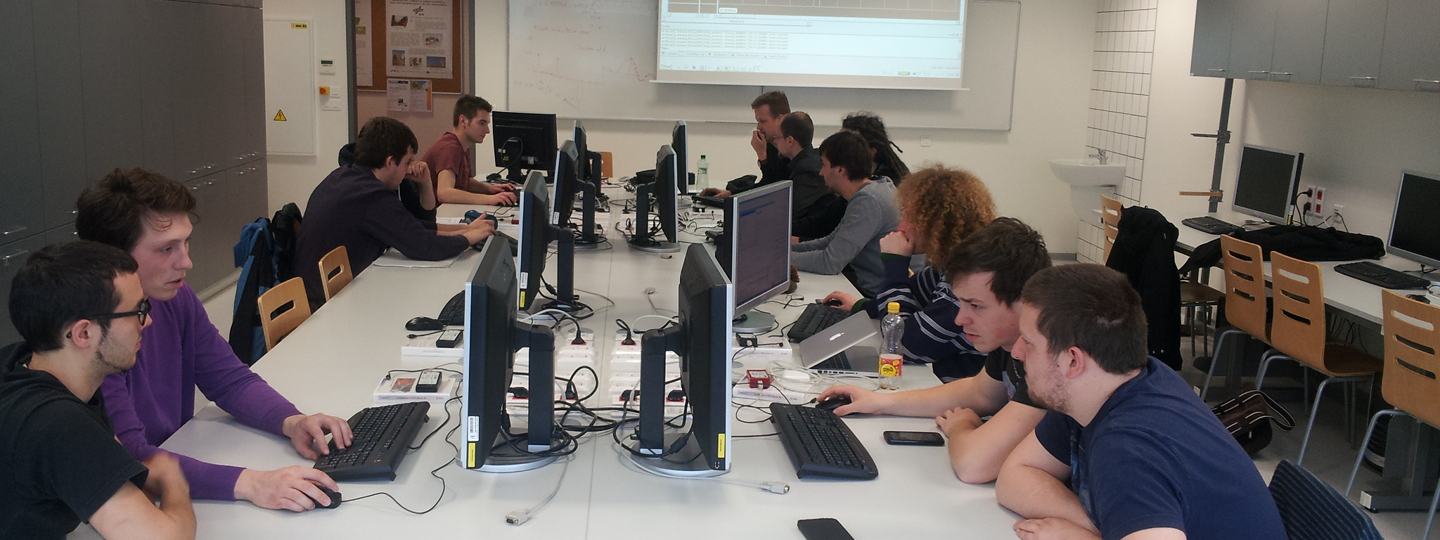
Analog Circuits Laboratory
This laboratory is prepared for the implementation of basic tasks in the frequency range up to the units of MHz, such as the measurement of the properties of amplifiers, passive and active filters, simple and more complex nonlinear circuits. A full suite of instrumentation is available, from power supplies, signal generators, millivoltmeters and multimeters to Keysight InfiniiVision oscilloscopes for automatic frequency response measurements and spectral signal analysis. A number of specialised devices are made for teaching, and simple analogue circuits are designed and implemented by students independently (on a breadboard or printed circuit board).
Laboratory of Microprocessor Technology
Bachelor students will learn the principles of basic digital circuits and their use in advanced circuits. Students in Digital Electronics 1 will design their own driver for a seven-segment display, a binary counter, or a traffic light control circuit in VHDL. In the follow-up course Digital Electronics 2, students learn the structure of microcontrollers and develop in C, for example, their own libraries for serial communication, a small weather station or an ultrasonic distance meter.
Laboratory of students' activities and PCB preparation
The student development lab is used for prototyping. Common equipment in the lab includes multimeters, oscilloscopes, power supplies and soldering stations. Students can get a PCB board made for projects for courses and especially for undergraduate and graduate theses. In the mechanical workshop, they can then drill, cut, bend, sand, polish, etc. their creations. In the laboratory, the students develop and assemble the equipment they design themselves for the implementation part of their bachelor and diploma theses. Details can be found in the EKT-SDU course, which is open to all BUT students.
Laboratory of Communication Systems
The laboratory demonstrates the operation of the building blocks of communication systems. It aims to show, for example, the properties of modulated signals, which are necessary for the transmission of audio, video and data signals through free space, the properties of channel codes, which protect the transmitted data against interference, or the properties of special line codes, which are used for data transmission over metallic lines or optical fibre.
Laboratory of Directional and Satellite Communications
Students get a practical introduction to satellite communication systems and the issues involved in their operation. For example, they use measurements to verify the accuracy of satellite navigation systems, investigate the capabilities and physical limitations of the satellite Internet, or learn about high-resolution imaging of the Earth's surface in a wide range of electromagnetic radiation from low and geostationary orbits. It will also clarify the requirements for electronics for receiving weak satellite signals and the possibilities of satellite diagnostics in orbit.
Laboratory of Mobile Communications
The tasks will enable students to understand the connections between the physical principles, limitations of radio communication, technical design and characteristics of modern wireless telecommunication systems of different generations. In addition to the theory, practically oriented students will explore not only the sub-aspects of wireless networks in laboratory exercises, but also test the characteristics of mobile phones and verify their compliance with relevant standards.
Laboratory of Optical and Photonic Communications
The educational laboratory of optics is focused on fibre optic and cable-free communication systems, optoelectronics, photonics and laser technology. Students are enrolled in the Optical Communications course, which focuses on the transmission of information over an optical communication channel, and in the Quantum and Laser Electronics course, in which they become more familiar with the nature and properties of laser radiation. The laboratory is equipped with a range of lasers and detection systems, optical components for shaping, directing and modifying laser radiation.
